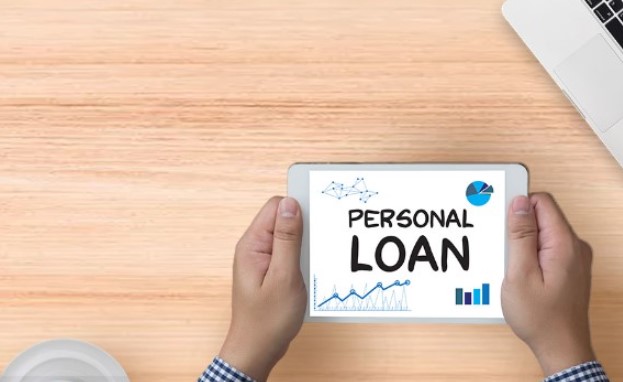In today’s dynamic financial landscape, personal loans have emerged as versatile tools for addressing diverse financial needs. Whether it’s consolidating debt, covering unexpected expenses, or funding a significant purchase, personal loans offer a flexible solution. However, understanding the intricacies of personal loans is crucial for making informed decisions. In this guide, we’ll delve into the nuances of personal loans, exploring their features, benefits, application process, and more.
Unlocking the Power of Personal Loans

Diverse Utilization
Personal loans offer a wide array of applications, making them highly versatile for addressing different financial needs. From consolidating high-interest debt to covering unexpected medical expenses or making significant purchases, the flexibility of personal loans is unparalleled. Whether it’s financing a home renovation project, funding a dream vacation, or covering tuition fees for higher education, personal loans provide the freedom to pursue various endeavors without restrictions.
Debt Consolidation
One of the primary benefits of personal loans is their utility in consolidating existing debt. For individuals juggling multiple high-interest debts, such as credit card balances or outstanding medical bills, consolidating these obligations into a single personal loan can streamline repayment. By consolidating debt, borrowers can simplify their financial obligations, potentially lower their overall interest rates, and create a structured repayment plan. This not only reduces the burden of managing multiple payments but also helps save money on interest over time.
Flexible Terms and Conditions
Unlike some other forms of financing, personal loans often come with flexible terms and conditions tailored to individual needs. Borrowers have the flexibility to choose the loan amount, repayment period, and payment frequency that best aligns with their financial goals and circumstances. Additionally, personal loans typically offer fixed interest rates, providing predictability and stability in monthly payments throughout the loan term. This allows borrowers to budget effectively and plan for future expenses with confidence.
No Collateral Required
Unlike secured loans, which require collateral such as a home or vehicle to secure the loan, personal loans are unsecured. This means that borrowers do not need to pledge any assets as security against the loan amount. The absence of collateral reduces the risk for borrowers, as there is no risk of losing valuable assets in the event of default. Additionally, the lack of collateral simplifies the application process, eliminating the need for complex asset valuation procedures typically associated with secured loans.
Rapid Access to Funds
In many cases, personal loans offer rapid access to funds, making them an attractive option for addressing urgent financial needs. Unlike some other forms of financing, which may involve lengthy approval processes or waiting periods, personal loans can often be approved and disbursed quickly. This makes personal loans an ideal solution for situations where time is of the essence, such as covering emergency expenses or seizing time-sensitive opportunities.
Building Credit History
For individuals looking to establish or improve their credit history, personal loans can be a valuable tool. Responsible borrowing and timely repayment of a personal loan can demonstrate creditworthiness and reliability to lenders, potentially leading to improved credit scores over time. A positive credit history opens doors to better loan terms, lower interest rates, and increased access to financial products and services in the future.
Navigating the Application Process
Researching Lenders and Loan Options
Before diving into the application process, it’s essential to research various lenders and loan options to find the best fit for your needs. Explore reputable banks, credit unions, and online lenders, comparing factors such as interest rates, fees, repayment terms, and eligibility requirements. Consider reading reviews and testimonials from other borrowers to gauge the lender’s reputation and customer service quality.
Assessing Eligibility and Requirements
Once you’ve identified potential lenders, take time to assess their eligibility criteria and documentation requirements. Lenders typically consider factors such as credit score, income, employment history, and debt-to-income ratio when evaluating loan applications. Review the lender’s website or contact their customer service team to understand the specific requirements and ensure you meet them before applying.
Preparing Documentation
Gather all necessary documentation before initiating the loan application process to streamline the process and expedite approval. Commonly required documents may include:
- Identification: Provide a government-issued ID, such as a driver’s license or passport, to verify your identity.
- Proof of Income: Submit recent pay stubs, tax returns, or bank statements to demonstrate your income and financial stability.
- Credit History: Be prepared to authorize the lender to pull your credit report to assess your creditworthiness and repayment history.
Having these documents readily available will ensure a smooth application process and increase your chances of approval.
Completing the Application
Once you’ve selected a lender and gathered your documentation, it’s time to complete the loan application. Most lenders offer online applications for convenience, allowing you to fill out the form from the comfort of your home. Be thorough and accurate when providing information, ensuring there are no errors or discrepancies that could delay the approval process. Double-check all fields before submitting the application to avoid any potential issues.
Reviewing Loan Offers
After submitting your application, you’ll receive loan offers from the lender(s) you applied to. Take time to review each offer carefully, paying attention to interest rates, fees, and repayment terms. Consider the total cost of the loan, including interest and fees, over the entire repayment period to make an informed decision. Compare offers from multiple lenders to ensure you’re getting the best deal possible.
Accepting the Loan and Closing
Once you’ve selected the loan offer that best meets your needs, follow the lender’s instructions to accept the loan and complete the closing process. This may involve signing a loan agreement electronically or in person, depending on the lender’s procedures. Review the terms and conditions of the loan agreement carefully, ensuring you understand your rights and obligations as a borrower. Upon closing, the lender will disburse the loan funds to your designated account, typically within a few business days.
Managing Your Personal Loan Responsibly
Effectively managing a personal loan is essential for maintaining financial health and achieving long-term financial goals. Here’s a comprehensive guide on how to responsibly manage your personal loan:
Utilize Funds Wisely
Once you’ve received the funds from your personal loan, it’s crucial to use them wisely and purposefully. Whether you’re consolidating debt, covering expenses, or funding a project, make strategic decisions to maximize the loan’s impact. Avoid frivolous spending and prioritize allocating the funds toward achieving your financial objectives.
Budgeting and Planning
Develop a budget that incorporates your loan repayment into your monthly expenses. Calculate the monthly payment required for your personal loan and ensure it fits comfortably within your budget. Consider using budgeting tools or apps to track your spending and monitor your progress toward paying off the loan. Planning ahead can help you stay on track and avoid financial strain.
Establishing Automatic Payments
Setting up automatic payments for your personal loan can help ensure timely and consistent payments each month. Many lenders offer autopay options, allowing you to schedule payments directly from your bank account. Automatic payments reduce the risk of missed or late payments, which can negatively impact your credit score and incur late fees.
Prioritizing High-Interest Debt
If you’ve used the personal loan to consolidate debt, prioritize paying off high-interest debts first. Allocate additional funds toward these debts to accelerate their repayment and minimize interest charges over time. By focusing on high-interest debt, you can save money on interest and become debt-free sooner.
Building an Emergency Fund
While managing your personal loan, it’s essential to prioritize building an emergency fund to cover unexpected expenses or financial setbacks. Aim to set aside three to six months’ worth of living expenses in a high-yield savings account. Having an emergency fund provides a financial safety net and reduces the need to rely on credit cards or additional borrowing in times of need.
Monitoring Your Credit
Regularly monitor your credit report to track your credit utilization and payment history. Monitoring your credit allows you to detect any errors or discrepancies that may impact your credit score. Address any inaccuracies promptly by disputing them with the credit bureaus. Additionally, monitoring your credit provides insight into your overall financial health and helps you identify areas for improvement.
Communicating with Your Lender
If you encounter financial difficulties or anticipate challenges with loan repayment, communicate proactively with your lender. Lenders may offer assistance programs or flexible repayment options to help borrowers navigate temporary financial hardships. Contact your lender as soon as possible to discuss alternative arrangements and avoid defaulting on your loan.
